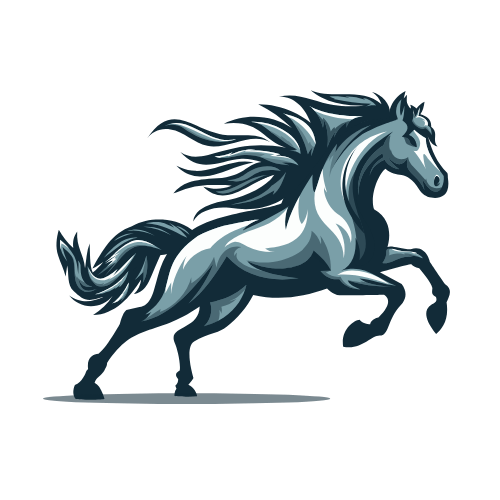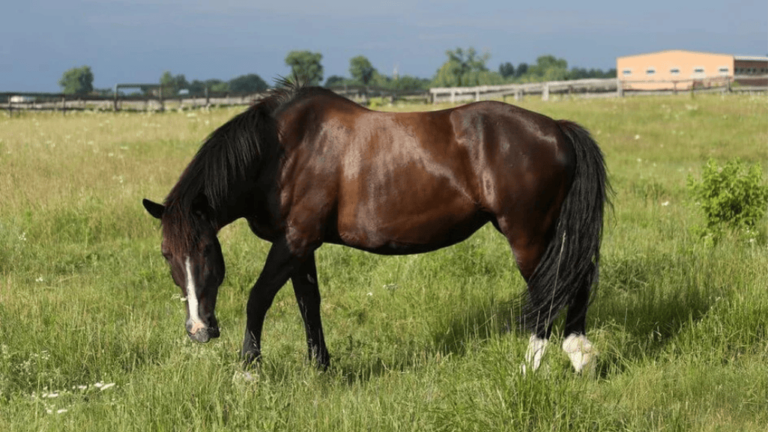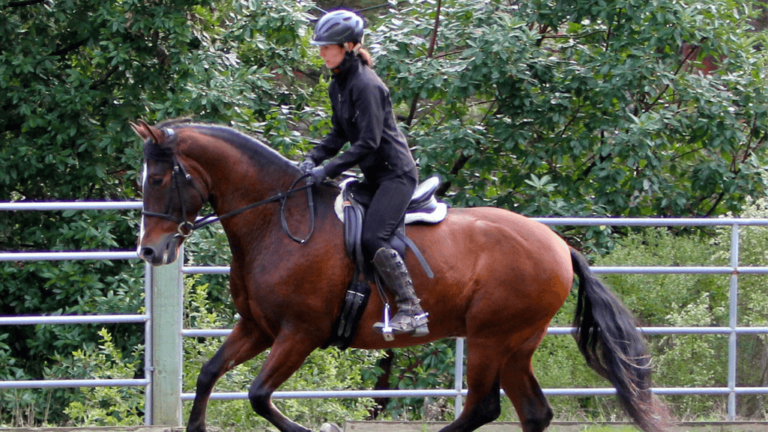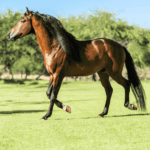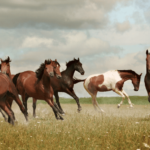As a horse owner or rider, knowing about common injuries is key. Horse injuries can be from small bruises to serious fractures. Quick action and treatment are vital for recovery. This guide will cover the causes, signs, and management of equine injuries. It also offers tips on preventing them.
A 2007 study by John Mayberry and colleagues found that new riders are more likely to get hurt. But, more experienced riders face a higher risk of serious injuries. The study also pointed out the need for safety gear for all riders, regardless of skill level.
Horseback riding injuries can be expensive. The UK’s 2009-2010 data showed costs averaging over $16,000 for hospitalized patients. These figures don’t include rehabilitation or counseling costs. In 2017, over 48,000 people were treated in emergency rooms for such injuries.
To avoid horse leg injuries and other issues, prevention is key. Regularly check riding gear, ensure proper saddle and stirrup fit, and always wear safety gear. Knowing the causes and signs of injuries helps keep your horse healthy and saves on vet bills.
Key Takeaways:
- Novice riders are most likely to be injured, but advanced riders face a higher risk of serious injury.
- Horseback riding injuries can be costly, with initial medical care averaging over $16,000 for hospitalized patients.
- Proper safety gear, including helmets and breakaway stirrups, is essential for all skill levels.
- Regular equipment inspections and proper fitting of saddles and stirrups can help prevent accidents.
- Understanding the causes and signs of common horse injuries is critical for quick treatment and recovery.
Understanding Equine Musculoskeletal Injuries
Equine musculoskeletal injuries are a big worry for horse owners and vets. These injuries can be from small strains to serious fractures. They can really hurt a horse’s performance and life quality. We’ll look at common injuries, their causes, symptoms, and treatments.
Joint diseases like arthritis and tendon injuries are common and expensive in race horses. Osteoarthritis is a big pain and performance killer for horses. Bone fractures, simple or compound, are also common. They can come from accidents or bone diseases.
Fractures and Luxations
Horse fractures and luxations need quick vet help. Fractures are when a bone breaks, and luxations are when a joint moves out of place. These can happen from big accidents or from too much stress on bones and joints. Signs include swelling, lameness, and visible changes in the area.
Lacerations and Puncture Wounds
Horse lacerations and puncture wounds happen often. Lacerations are cuts, and puncture wounds are deep, narrow wounds from sharp objects. These can hurt a lot and might need stitches to heal right and avoid infection.
Synovial Infections and Exertional Rhabdomyolysis
Equine synovial infections, or septic arthritis, happen when bacteria get into a joint. This causes pain, swelling, and fever. Horse exertional rhabdomyolysis is muscle damage from too much work. Symptoms include stiffness, not wanting to move, and dark urine. Both need fast vet care to avoid serious problems.
Recent years have seen great advances in techniques for diagnosing and healing musculoskeletal disorders in horses.
New advances in equine sports medicine offer many treatments for musculoskeletal issues. This includes regenerative therapies like stem cell treatments. Along with old treatments like anti-inflammatory drugs and physical therapy, many horses can get better and even go back to their old activities.
Preventing Horseback Riding Injuries
Horseback riding is thrilling but risky. About one in five riders will get seriously hurt. Falls are the main cause of these injuries. To stay safe, focus on the right safety gear, riding skills, and knowing how horses act.
Proper Riding Equipment and Attire
Wearing the right safety gear is key. Helmets can cut head injury risk by 40-70%. The FEI made helmets mandatory in dressage in 2021. Always wear a helmet to avoid head injuries like concussions.
Boots with a heel are also important. They protect your legs and keep your feet from getting stuck. For extra safety, wear protective vests in high-risk activities like cross-country and rodeo.
Riding Technique and Safety Precautions
Good riding skills help you stay balanced and in control. Beginners should take lessons and start on flat, open areas. Keep your seat balanced, heels down, and don’t hold the saddle too hard.
“Proper riding attire, such as pants and boots with a heel, can provide protection against lower extremity injuries and getting a foot stuck in the stirrup iron.” – Equestrian Safety Expert
Be ready for your horse to startle and approach them calmly. Always check your gear before riding to ensure safety.
Recognizing Horse Behavior and Demeanor
Knowing how horses behave is vital. They can get scared easily by sudden sounds or movements. Watch their ears to see if they’re alert or upset.
Building a strong bond with your horse is important. It helps with trust and communication. Recognizing when your horse is stressed can help prevent accidents.
Common Lower Limb Injuries in Horses
The horse’s lower limb is often injured, with the foot being very prone to issues like hoof abscesses, laminitis, and foot abscesses. Equine tendon injuries and ligament damage are common too. Joint problems like arthritis and osteochondral fragments also occur. In severe cases, lameness can happen due to trauma, cellulitis, or bone fractures.
Tendons and ligaments in a horse’s lower limb are made of collagen fibers. These fibers can stretch too much or get damaged by direct impact. This can lead to equine ligament damage. Horse leg injury symptoms include lameness, heat, swelling, and inflammation of the tendon sheath.
Diagnosing Lower Limb Injuries
Vets use imaging like ultrasound, x-rays, MRI, and CT scans to find horse lower limb injuries. Ultrasound is great for soft tissue damage. CT and MRI show internal details well.
“Early detection of laminitis is key for successful treatment.” – Hallmarq Veterinary Imaging
Treatment and Prevention
For tendon and ligament injuries, treatment may include:
- Box rest
- Pain relief medication
- Cold hosing
- Supportive bandaging
- Corrective/therapeutic shoeing
- Controlled exercise
To prevent injuries, keep the living area clean and feed well. Regular farrier work and proper exercise are also key. Hoof balance is important to avoid equine tendon injuries and ligament damage. This means regular trimming and shoeing.
Diagnosing Horse Injuries
When a horse gets hurt, it’s important to find out what’s wrong quickly and accurately. Vets use a mix of physical checks and advanced imaging to see how bad the injury is.
Physical Examination and Imaging Techniques
The vet starts by doing a detailed horse physical examination. They look for swelling, heat, and pain in the hurt area. They might also check how the horse moves to see if there’s any lameness.
To really understand the injury, vets use special imaging. Equine X-ray helps see bones and find fractures or joint problems. But for soft tissue injuries, like tendon and ligament damage, horse ultrasound is best.
“Ultrasound scans provide detailed images of the tendon and ligament fibers, allowing us to assess the severity of the injury and monitor the healing process over time.” – Dr. Sarah Johnson, Equine Veterinarian
Ultrasound and X-ray Imaging
Ultrasound scanning is a safe way to see soft tissues. It uses sound waves to make images in real time. It’s great for finding tendon and ligament problems. The vet might use light sedation to keep the horse calm and steady.
X-ray imaging is key for bone issues. It shows fractures, joint problems, and arthritis. Sometimes, MRI or CT scans are needed for very complex injuries.
Vets use what they find from physical checks and imaging to make a clear equine injury diagnosis. This helps them plan the best treatment. Quick action and correct treatment are vital for the horse’s recovery and to avoid long-term problems.
Treating Horse Injuries
Dealing with horse injury treatment depends on the injury’s severity and type. For common issues like cuts and soft tissue damage, rest, medication, and care are key. This helps the horse recover.
Equine wound care starts with cleaning the wound with antiseptic solutions. This prevents infection. Bandages are used to protect the wound and reduce swelling. How often to change the bandage depends on the wound’s condition.
Horse injury medication may include drugs to reduce pain and swelling. Cold therapy and supportive bandages are also used. For serious injuries, treatments like ultrasound and stem cells might be needed.
Equine bandaging is important for wounds near joints. It helps prevent infection. Bandages can be removed when the wound is fully healed.
In some cases, horse corrective shoeing is needed. It helps prevent injuries by keeping the hooves balanced. Regular trimming is also important for the horse’s leg health.
Rehabilitation and Recovery
Getting better from an equine injury takes time, effort, and a good plan. A successful horse injury recovery depends on controlled exercise, treatments, and exercises that meet your horse’s needs.
In the first stage, the goal is to lessen pain and swelling. This stage can last a few days to a week, based on the injury’s severity. Your vet might suggest hand-walking, groundwork, or gentle riding to keep blood flowing and prevent stiffness.
Controlled Exercise and Therapeutic Treatments
In the next phase, the aim is to increase tissue strength and improve balance. Equine controlled exercise is key, using hydrotherapy, cavaletti, and touch to aid healing and build strength.
Your vet will watch your horse’s progress closely with tools like gait analysis. These tools help spot any changes and guide adjustments to the recovery plan.
“Continued monitoring post-recovery, combining clinical examination with objective gait analysis, is recommended to promptly identify any changes in the horse’s condition.”
Strengthening Exercises and Cross-Training
In the final phase, the goal is to get your horse back to its pre-injury level. Horse strengthening exercises and equine cross-training are vital to rebuild muscle, boost flexibility, and lower the chance of getting hurt again.
The time it takes to fully recover depends on the injury. Skin might take a year to get 70% strong, but muscles can get 50% strong in 12 weeks. Tendons and ligaments need even longer, a year or more, to regain their strength.
By teaming up with your vet and sticking to a tailored recovery plan, you can help your horse fully recover. This plan should include controlled exercise, treatments, and strengthening exercises to prevent future injuries.
Conclusion
Keeping horses healthy and safe is key. Owners need to know first aid and work with vets for quick care. Understanding injuries and how to treat them helps prevent accidents and keeps horses well.
Studies show many injuries happen in horse riding. From 2018 to 2022, there were 4,760 emergency room visits. Most were head injuries, fractures, or falls. In Sweden, these injuries cost a lot each year for kids and adults.
Using the right gear and riding safely is important. Knowing how horses act can also prevent accidents. If an injury happens, quick diagnosis and treatment are vital. Recovery plans help horses get better and stay safe.
Being ready and informed helps horses stay healthy. Working with vets and experts is key for good care. With the right care, horses can recover and stay happy companions.
